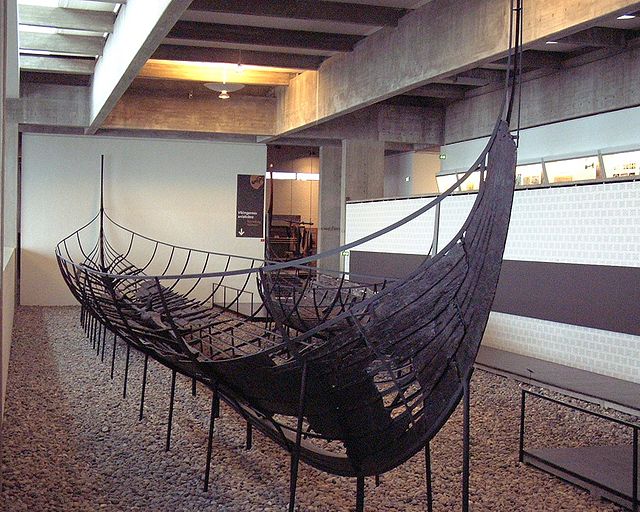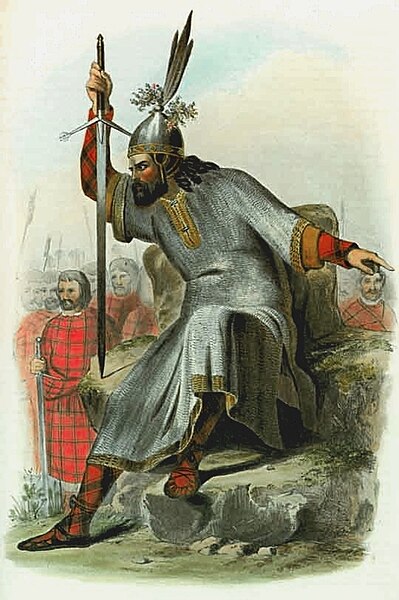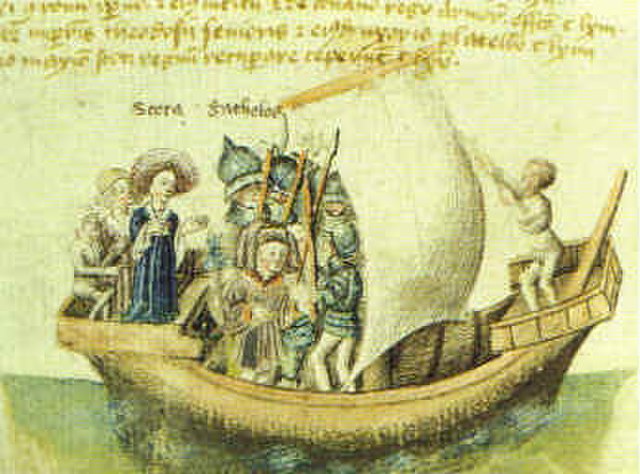The Norse–Gaels were a people of mixed Gaelic and Norse ancestry and culture. They emerged in the Viking Age, when Vikings who settled in Ireland and in Scotland became Gaelicised and intermarried with Gaels. The Norse–Gaels dominated much of the Irish Sea and Scottish Sea regions from the 9th to 12th centuries. They founded the Kingdom of the Isles, the Kingdom of Dublin, the Lordship of Galloway, and briefly ruled the Kingdom of York. The most powerful Norse–Gaelic dynasty were the Uí Ímair or House of Ivar.
Skuldelev II, a Viking warship built in the Norse–Gaelic community of Dublin (c. 1042)
R. R. McIan's impression of a Norse–Gaelic ruler of Clan MacDonald, Lord of the Isles
The Gaels are an ethnolinguistic group native to Ireland, Scotland and the Isle of Man. They are associated with the Gaelic languages: a branch of the Celtic languages comprising Irish, Manx and Scottish Gaelic.
The Emigrants, painting from 1844. This depicts a Highland Scots family in Gaelic dress migrating to New Zealand.
Scota and Goídel Glas voyaging from Egypt. From the 15th century chronicle the Scotichronicon.
The Lia Fáil at the Hill of Tara, sacred site of inauguration for the Gaelic High Kings.
A page from the 9th century Book of Kells, one of the finest examples of Insular art. It is believed to have been made in Gaelic monasteries in Ireland and Scotland.






